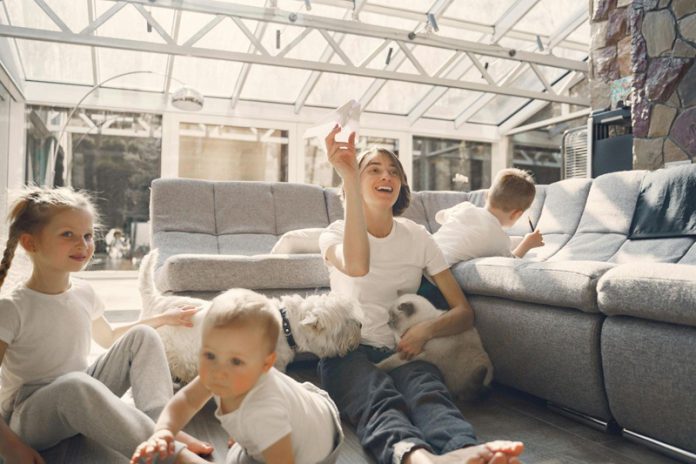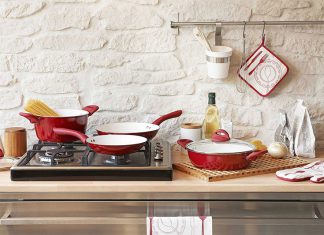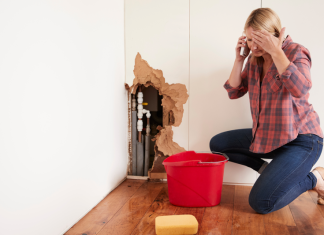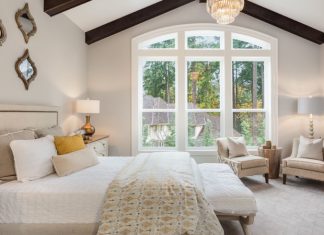Creating a pet-friendly living room requires more than simple accommodations for your furry companions; it’s about curating a space where both humans and pets coexist in harmony. Pets infuse joy into our lives but bring unique challenges, from shedding to potential damage to furniture and floors. Yet, with thoughtful planning, designing a living room that merges style, functionality, and pet-friendly elements becomes achievable.
A well-crafted pet-friendly living room marries durability with comfort and style. By selecting resilient materials, organizing space efficiently, and considering your pet’s habits, you can shape a living area that delights both you and your pets. This guide explores practical ideas and tips to strike a balance between a pet-friendly environment and an inviting, aesthetically pleasing living space.
- Embrace Resilient Furniture
When choosing furniture, embrace resilience. Pets test the durability of your belongings so opt for materials that endure claws, fur, and spills. Leather, synthetic fabrics, and tightly woven textiles serve as sturdy choices. These materials withstand wear and are easier to cleanse. Seek out furniture with robust frames. Steer clear of delicate fabrics like silk or velvet, which can succumb to damage.
- Select Pet-Friendly Flooring
Carpets tend to trap pet hair and absorb odors. Instead, gravitate toward hard flooring options like tile, hardwood, or laminate. These surfaces clean easily and resist stains. If you desire a softer touch, choose area rugs that can be washed with ease. Consider placing floor mats in areas where your pets frequent. These mats shield your flooring from scratches and spills.
- Guard Your Walls
Pets can occasionally mar or soil walls. To preserve their appearance, consider using washable paint. This type of paint allows for easy removal of smudges and dirt. If your pet has a penchant for chewing, avoid wallpaper or wood paneling, which can suffer damage. You might also install wall protectors in spots where your pets tend to scratch or rub.
- Establish Designated Pet Zones
Grant your pets their own nook in the living room. Arrange a cozy corner with a pet bed or cushion, offering them a place to unwind without dominating the room. Add a basket of interactive dog toys to keep them engaged. If your pet enjoys climbing or perching, consider incorporating shelves or a cat tree.
- Adorn with Slipcovers and Throws
Slipcovers and throws protect your furniture from pet hair and dirt. They remove easily for washing, maintaining a fresh appearance in your living room. Choose colors and patterns that complement your decor to sustain a stylish look. Slipcovers also provide an effortless way to transform your furniture without purchasing new pieces.
- Cultivate Pet-Safe Greenery
Houseplants enhance a living room, but some can harm pets. Before introducing plants into your home, research which ones are safe for your furry friends. Pet-safe options like spider plants, Boston ferns, and bamboo palms fit the bill. Place plants out of reach of curious pets, or utilize hanging planters for safety.
- Tame Cords and Wires
Cords and wires present hazards for pets. Keep them out of reach or employ cord organizers to prevent your pets from chewing on them. Conceal cords behind furniture or use protective covers. This strategy keeps your pets safe and shields your electronics from harm.
Conclusion
The living room anchors the soul of a home—a space where family and friends intertwine, sharing moments of connection, repose, and joy. It mirrors the household’s essence, radiating warmth, comfort, and unity. As the central hub, it draws everyone together, including pets who instinctively gravitate to this communal haven.
For pets, the living room transcends the notion of just another room; it becomes a sanctuary where they uncover companionship, solace, and security. As the heartbeat of home life, it’s where pets engage most, whether nestling beside you on the couch, playing with a cherished toy, or basking in the presence of their human family. As pet owners, it’s our duty to make sure this space feels welcoming and safe for them as well.















